Sound-Based Meditation App UI/UX Design
Meditation has ancient roots, and so does sound signature. I designed a sound-based medication app UI/UX that suggests mantras based on users’ desires!
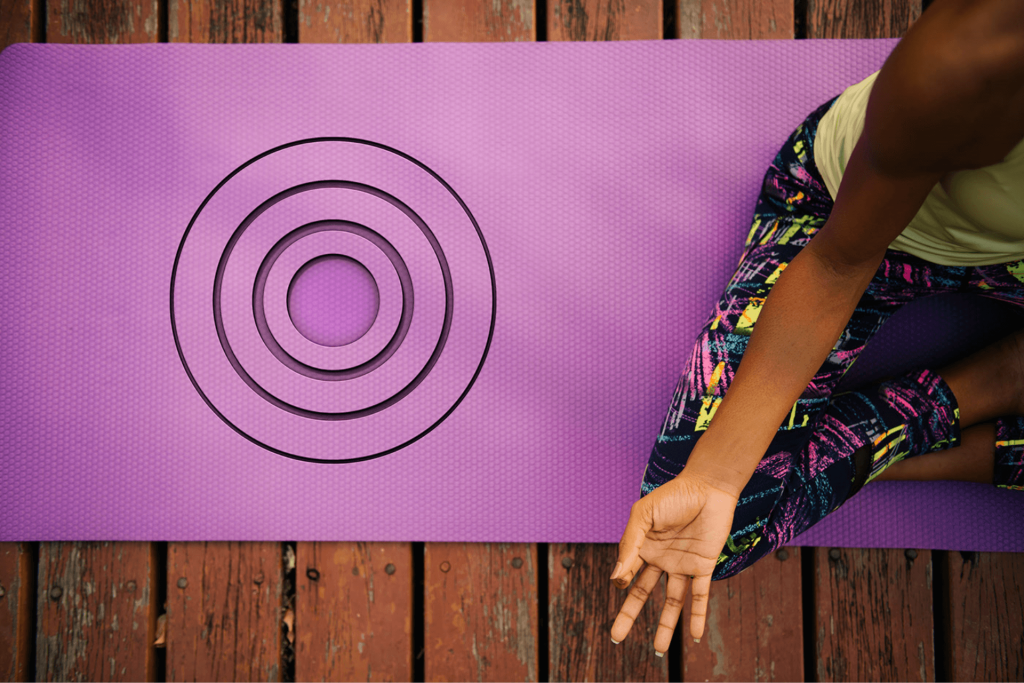
What Is Meditation & What Is Not Meditation?
Meditation is something everyone can do to improve their mental and emotional health. It has many benefits, such as increasing focus and attention, improving stress management, promoting happiness, enhancing resilience, improving physical health, and more.
Meditation isn’t about becoming a different person, a new person, or even a better person. It’s about training in awareness and getting a healthy sense of perspective.
Scope of work
- User Research
- Wireframe Prototype Design
- Usability Testing
- User Interface Designing
- Brand Identity
- Animation/Interaction Design
Tools
- Axure
- Mural
- Adobe XD
- Invision App
- After Effects
What Is Mantra Meditation?
This type of meditation uses a repetitive sound to clear the mind. The sound can be a word, phrase, or sound like the popular “Om.” It is also a good practice for people who don’t like silence and enjoy repetition.
Challenge
Design sound-based mantras and a healing mobile app for Meditation to help people improve their mental health, stay stress-free, and sleep better.
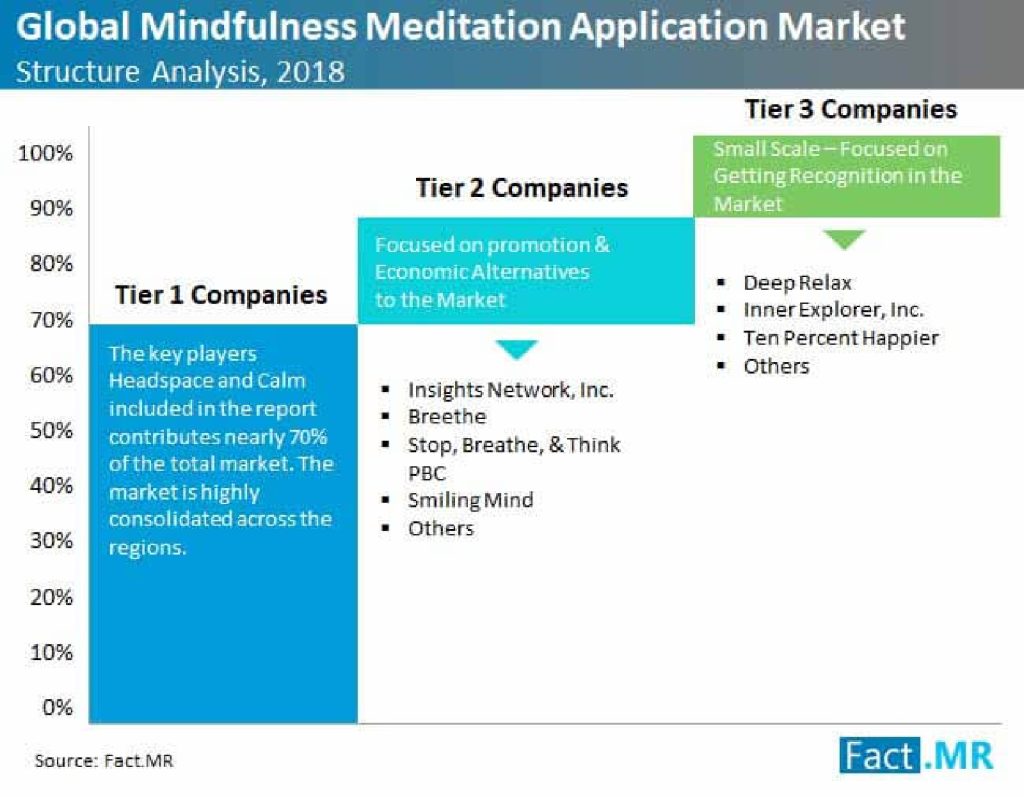
Meditation Apps Market Value
According to a new research study by Fact.MR, the mindfulness meditation application market, was valued at ~ US$134 Mn in 2018. Between 2019 and 2029, the market is likely to see an incremental opportunity of ~ US$184 Mn.
Competitors analysis
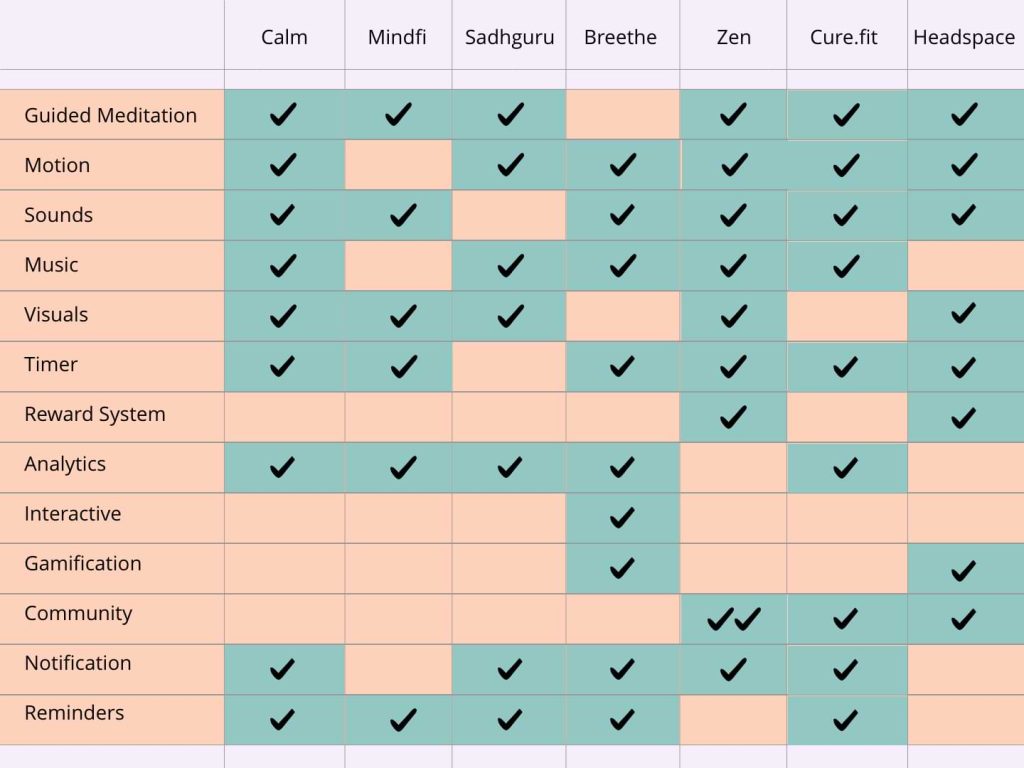
User Research
The survey was web-based and took between 7 and 10 minutes to complete. All responses were anonymous. Participants completed ten multiple-choice questions about their engagement with the app, why they started using it, and whether they noticed changes in their mental, Physical, Stress, or sleep after using medication Apps.
Following the questions, I asked my targeted users:
- Who are the users of meditation apps?
- What do they use to meditate?
- Do they know what meditation is and what its benefits are?
- Why do people do certain things around meditation?
- And what are their current pain points?
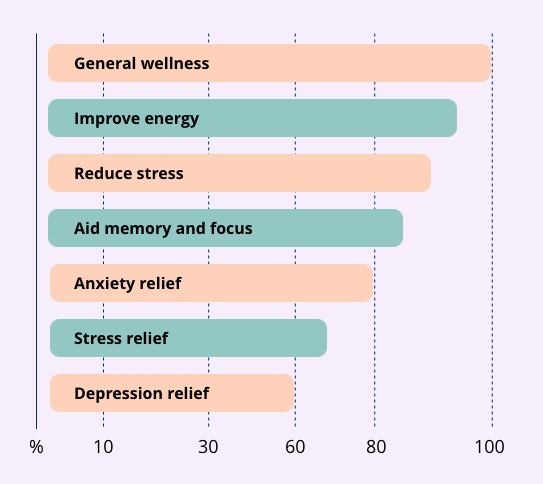
My questions revolved around practicing mindfulness, meditation, and emotional mental health. Here’s a summary of key statistics :
- 85% practice mindfulness by doing meditation and breathing exercises to improve memory & focus
- 68% found meditation/ breathing exercises to be most effective in reducing stress
- 90% practice to improve energy
- 80% practice to be more aware of thoughts/ feelings and be more present
- 50% of people haven’t used a meditation app
- 60% reported that forming a habit is difficult, which prevents them from practicing mindfulness
- 64% report that listening to music helps them when experiencing negative thoughts and feelings. Interviews
I conducted qualitative research by interviewing 15 people who have practiced meditation in the past and continue to practice now. The interviews revealed many insights into the practice of meditation itself, as well as people’s individual discoveries of mindfulness and sound meditation.
“It feels like a zen.”
Many of my interviewers were my local friends, and I connected with some of them on social media, so hearing about their meditation experiences was truly inspiring and heartwarming.
“I have been in depression for the last 3 years, so I started meditation because I wanted to be happier & energetic. It changed my life completely — I feel much more positive.”
Here are some essential insights I pulled from my interviews:
- People want to deal with negative feelings in a mentally healthy way
- People want to come out of negative emotions
- People often start meditating because they are in the wrong place and desire to improve their mental health and state of mind.
People often deal with negative emotions with destructive habit mechanisms — like drinking, smoking, taking drugs, or watching TV. At this point, I had an ‘AHA moment’ upon gaining this insight.
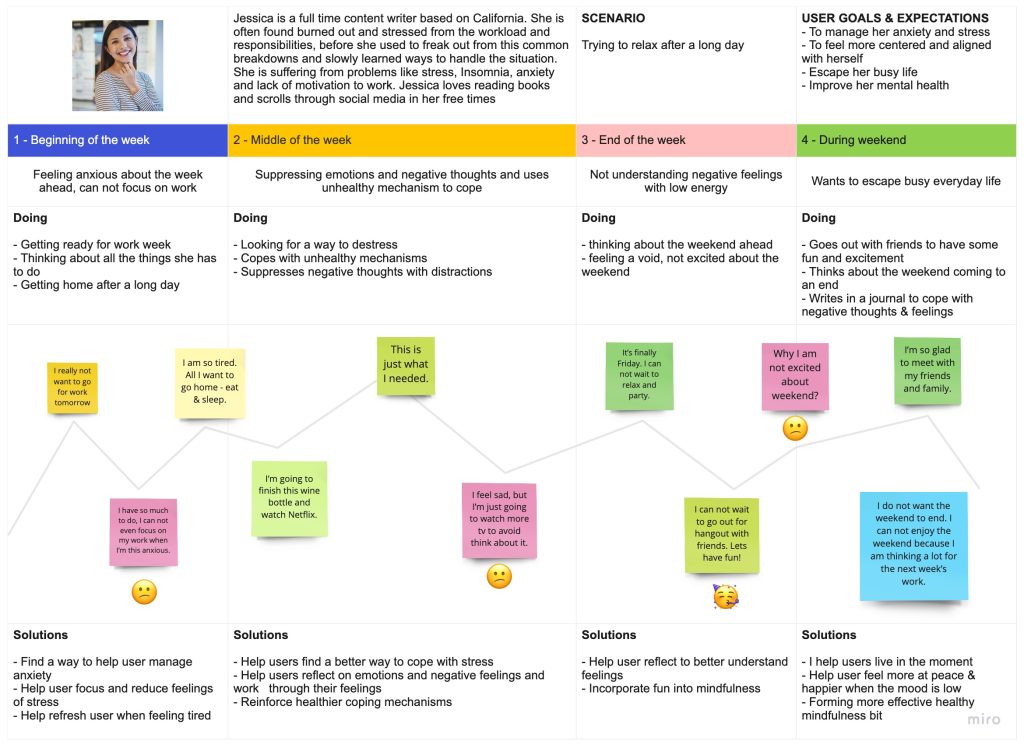
Journey Map
The Journey map puts the situation at hand in context. It’s another great tool that helped me establish the user group’s mental models and pinpoint the low points in their experiences. The journey highlighted below represents a week in the life of a busy individual managing their negative emotions, feelings, and stress.
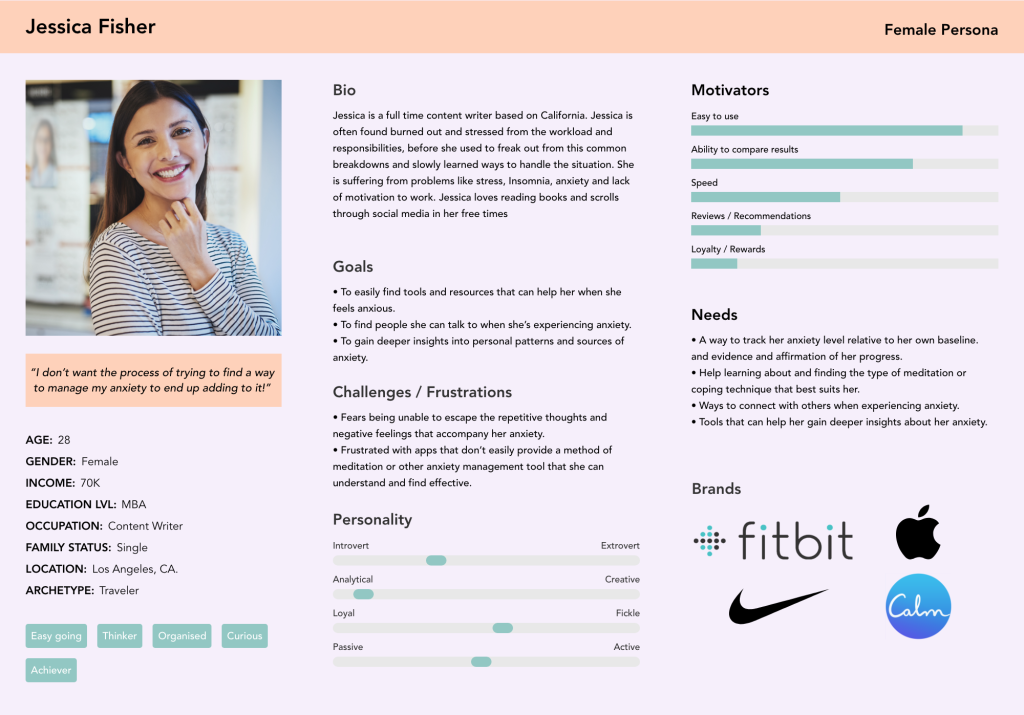
User Persona
I developed two personas to clarify our users’ problems and the existing opportunities to better serve them.
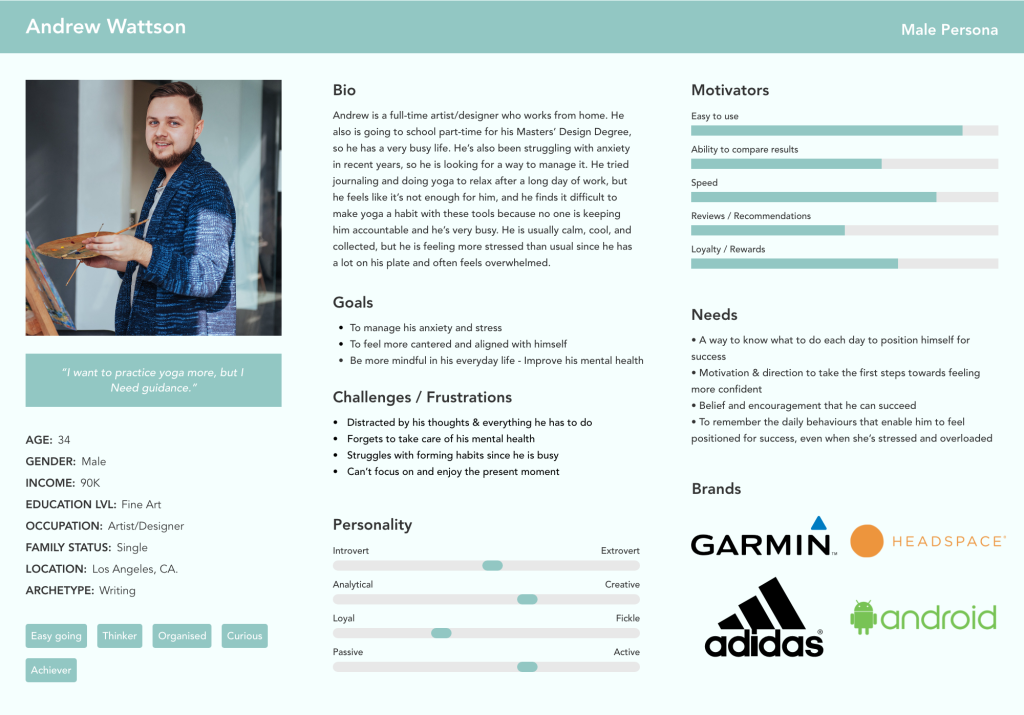
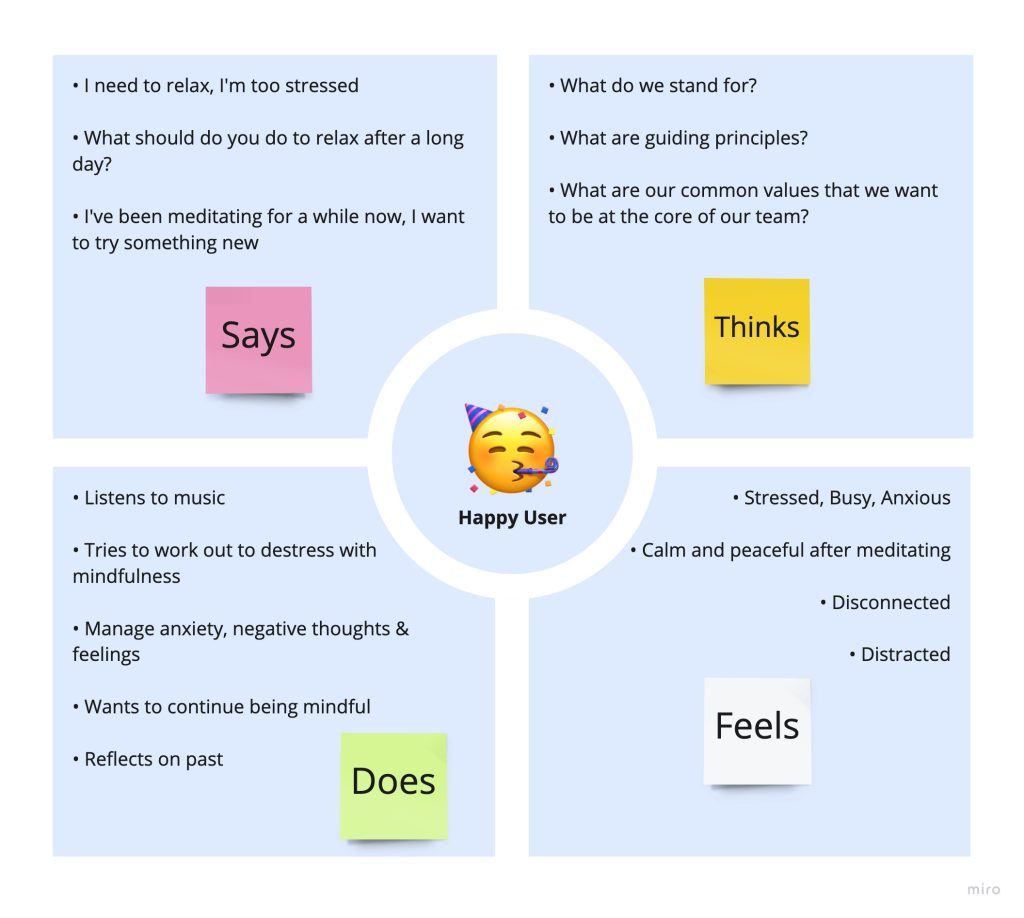
Empathy Map
The Journey map puts the situation at hand in context. It’s another great tool that helped me establish the user group’s mental models and pinpoint the low points in their experiences. The journey highlighted below represents a week in the life of a busy individual managing their negative emotions, feelings, and stress.
Value Proposition
The other half of the Value Proposition Canvas was then utilized to ensure that the product features aligned with the consumers’ demands and values. Product-market fit guarantees that the product/service features provide value to the user group by generating benefits and easing their difficulties.
Here’s a summary of the Product Market Fit:
- The habit reinforcement option will send daily notifications to users to help them monitor their progress, establish healthy habits, and overcome obstacles to finding time and remembering to meditate and reflect.
- Users may utilize guided reflection activities to reflect on all emotions/thoughts, avoid killing feelings, and develop a healthy coping strategy for the symptoms of their mental illnesses/stress.
- The guided meditation improves attention, relaxation, and Sound Signature while reducing stress and anxiety.
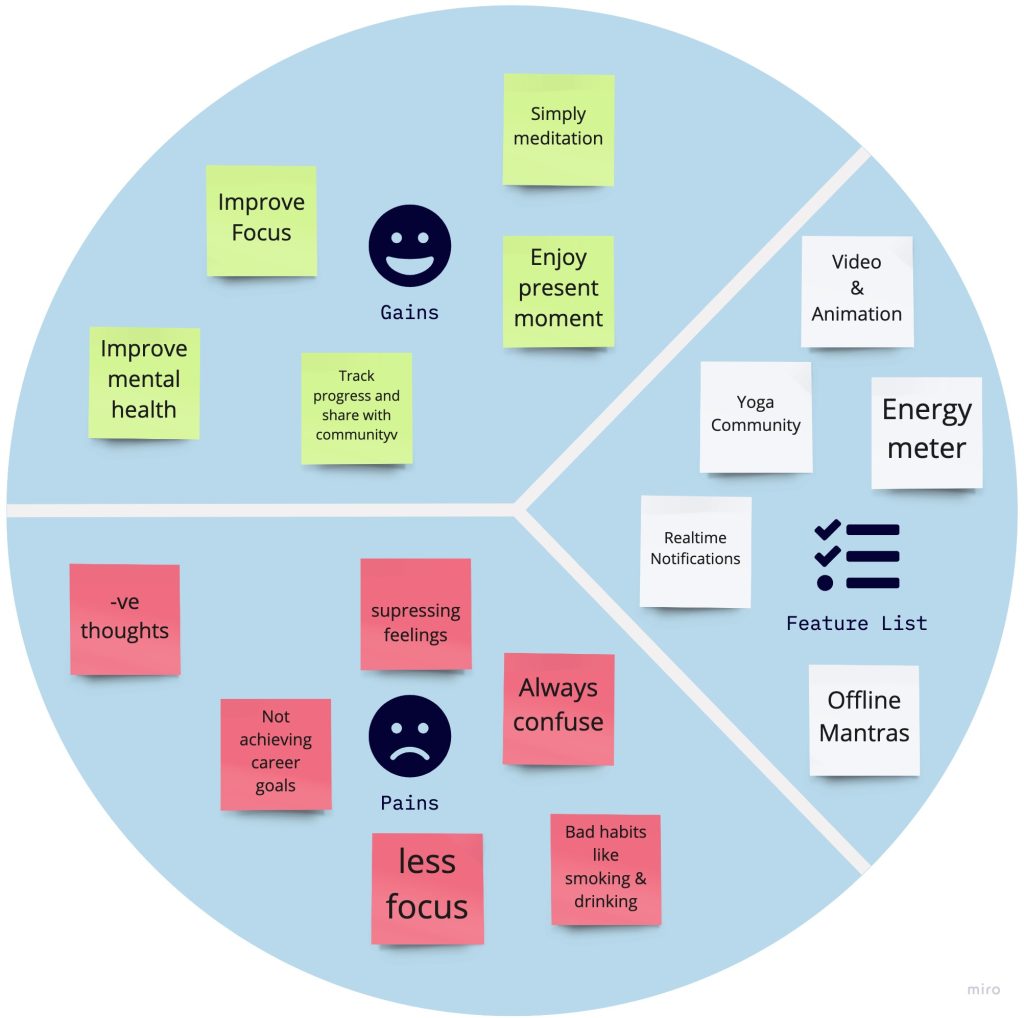
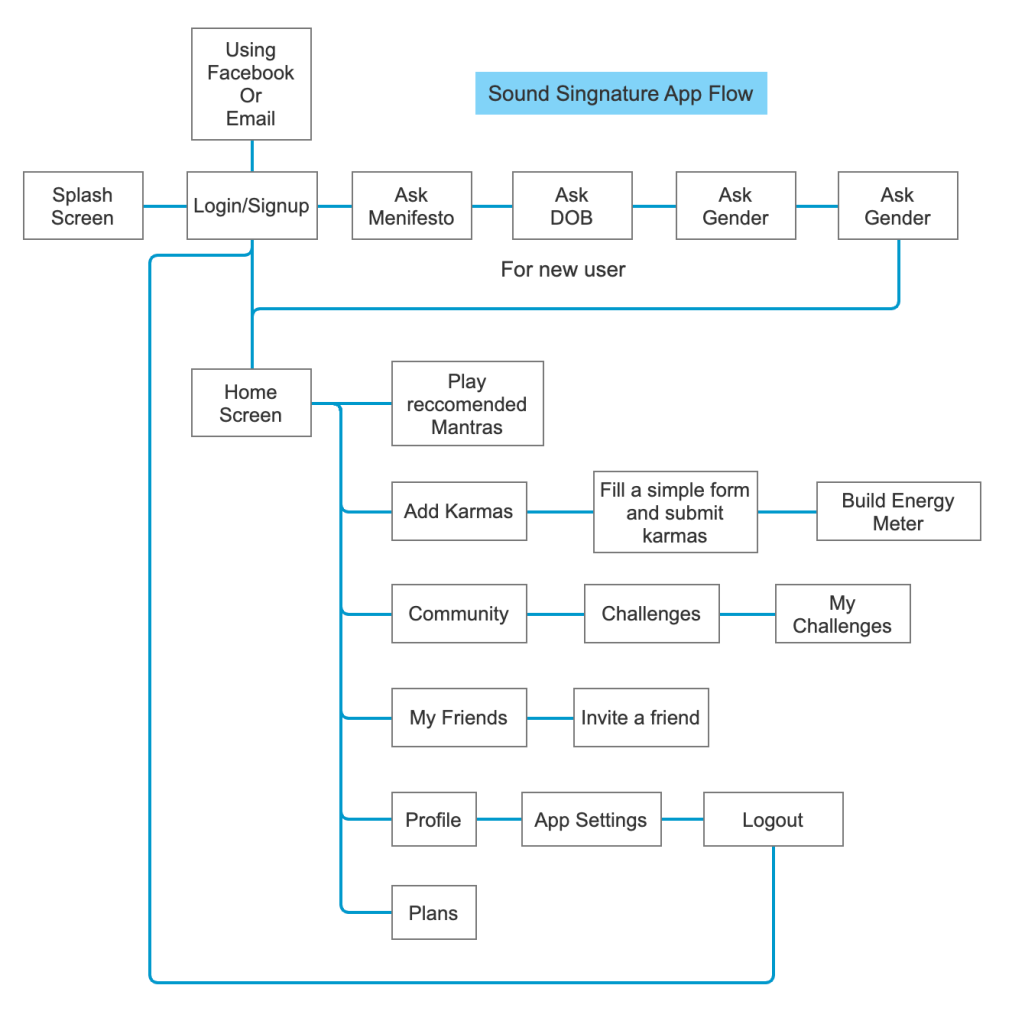
User Flow
The user flow reflects the user’s joyful route to completing their “task.” This tool helped me better understand consumers’ expectations and how they will engage with the prototype.
High-Fidelity Prototype
Based on the feedback from the low-fi prototype, I made some changes to the next prototype. I improved the reflection task by adding extra screens and integrating sound functionality into the final two screens.
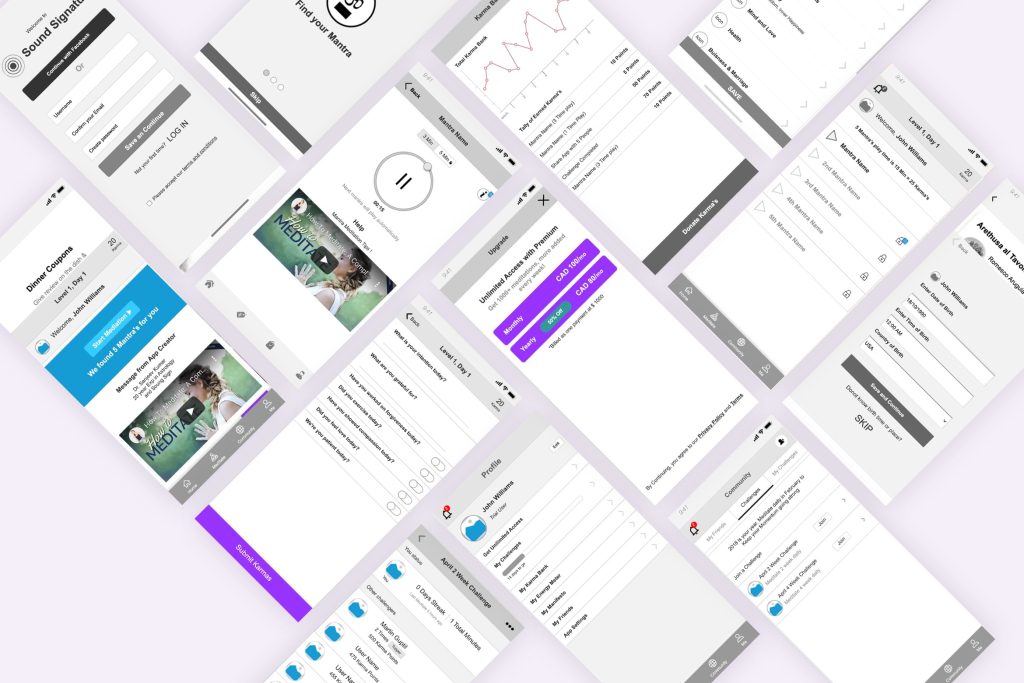
Branding
This is the most responsible part of the design process, where users interact.
It establishes your company’s identity in your customers’ minds. A good branding strategy involves personalization at the highest level. By keeping your customers in mind, you can create an offer they cannot refuse. By giving your branding strategy a personalized touch, you can make your customers feel important.
The colors, typography, and overall visual design communicate with the users to convey the ideas, purposes, and themes they represent.
I start the visual design process by defining the brand elements, which are the core values and characteristics that represent the essence of the brand. It’s also essential to establish and test the visual design components before creating hi-fi prototypes, as the brand elements guide all UI decisions.
Brand elements should be:
- Peaceful
- Friendly
- Mesmerizing
- Smooth
I found that it’s just as important to test the product’s visual design with desirability tests to see what people say about the branding and, most importantly, how it makes them feel.
“Products are made in a factory, but brands are created in the mind.” – Walter Landor.
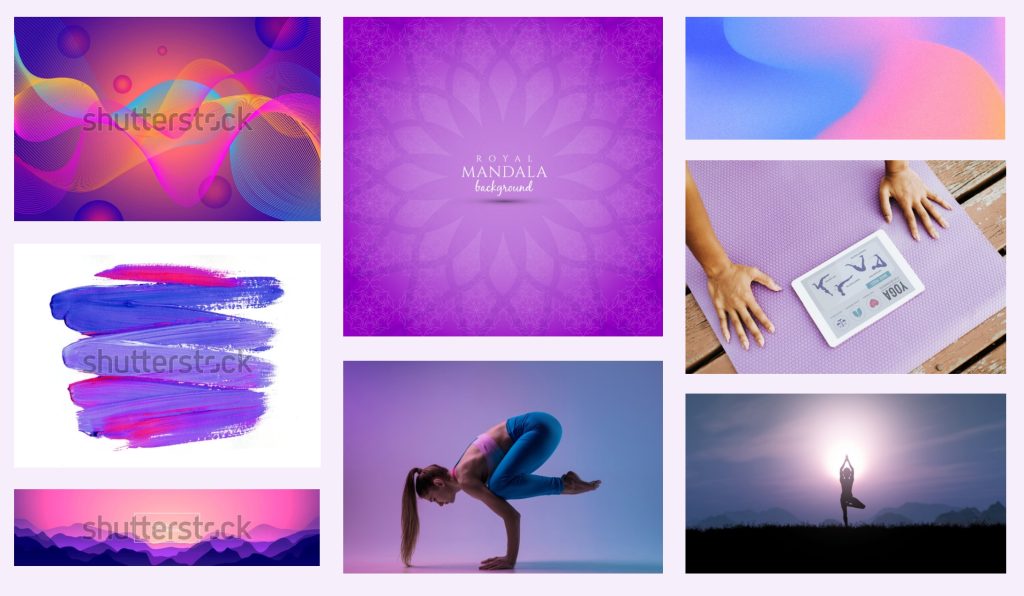
Moodboard
Keeping my brand elements in mind, I created a mood board using resources from Dribbble, Pinterest, Behance, and Pexels.
I created a mood board that can portray words like soft, dreamy, peaceful, calming, and delicate.
Style Guide
This is another branding step, where I designed the components of the actual interface. While the mood board captures the overall look and feel of this brand, the style tile emphasizes the individual elements of the design, specifically the colors, typography, iconography, and logo.
Here are the colors and fonts I used for the visual design:
- Kalm Purple — #A000FF
- Black — #000000
- Light Grey — #EBEBEB
- Rose Red — #FA1045
- Proxima Nova
After defining the app’s style guide, I designed the high-fidelity prototype!

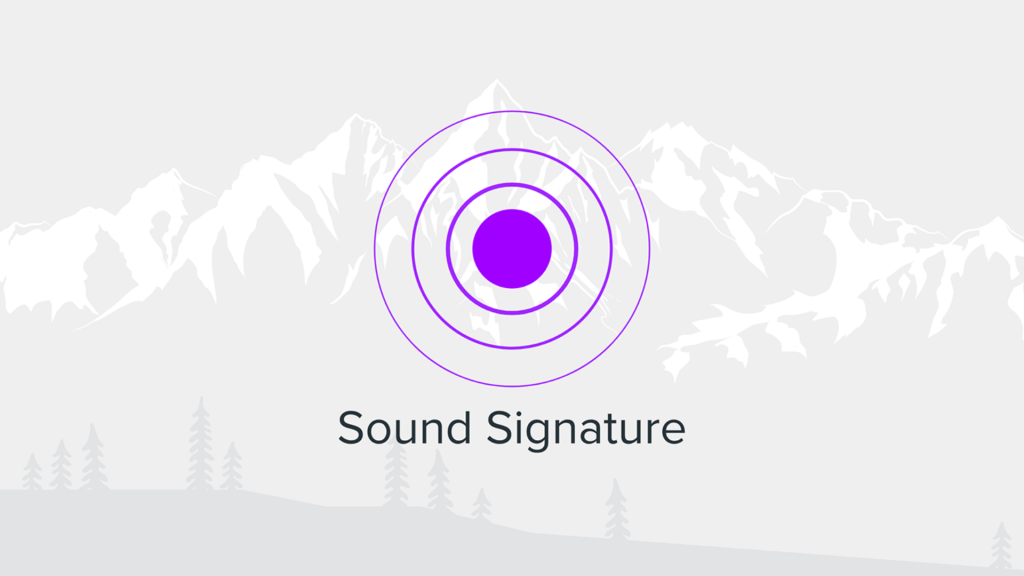

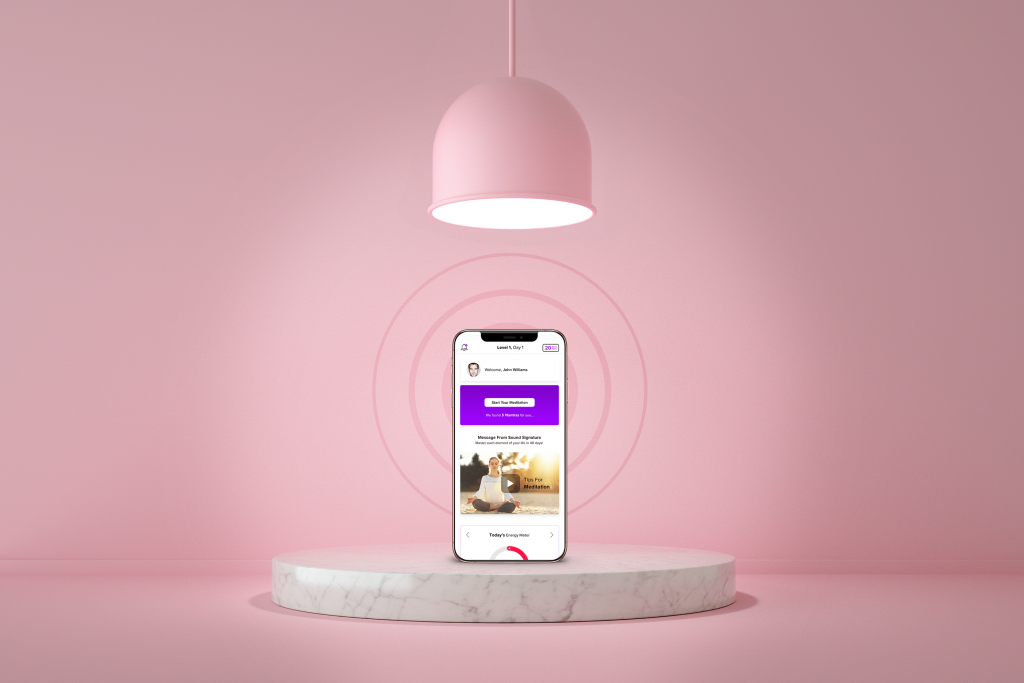
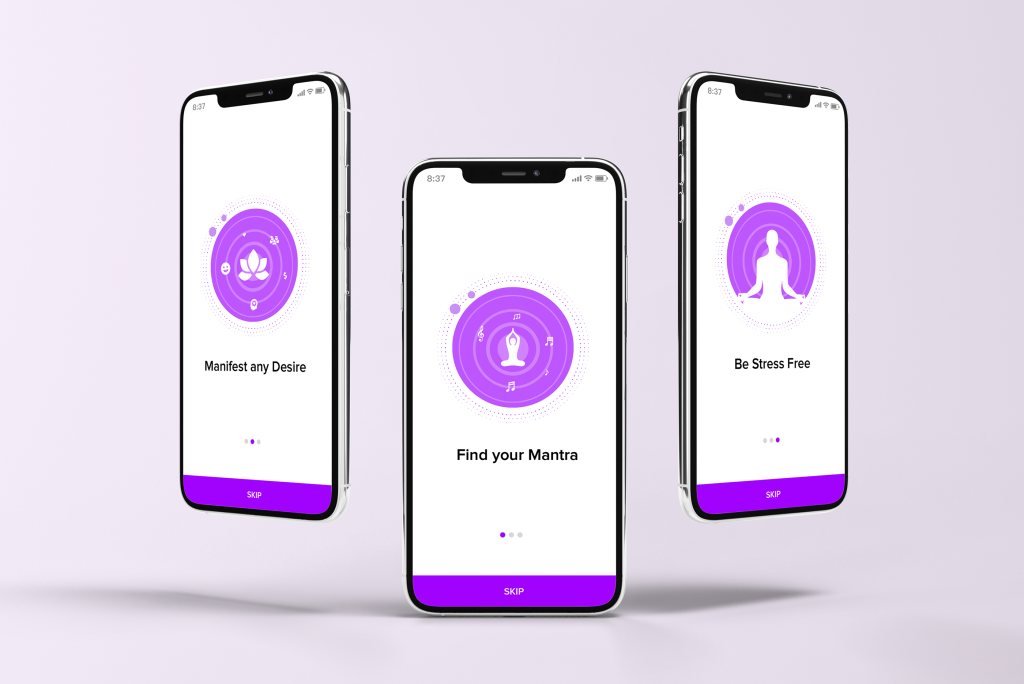
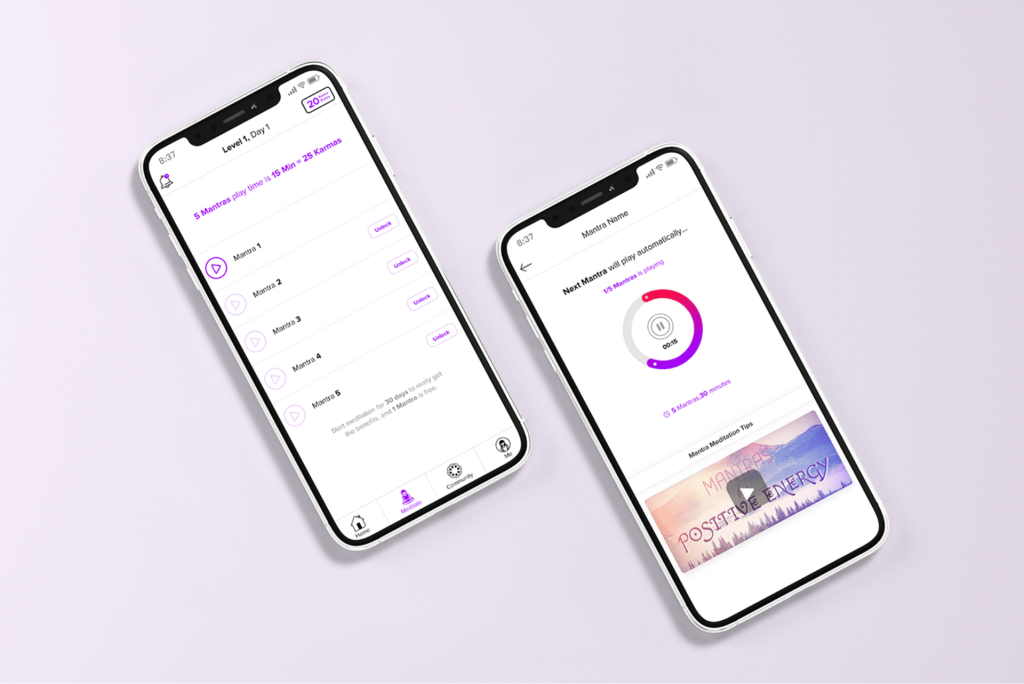
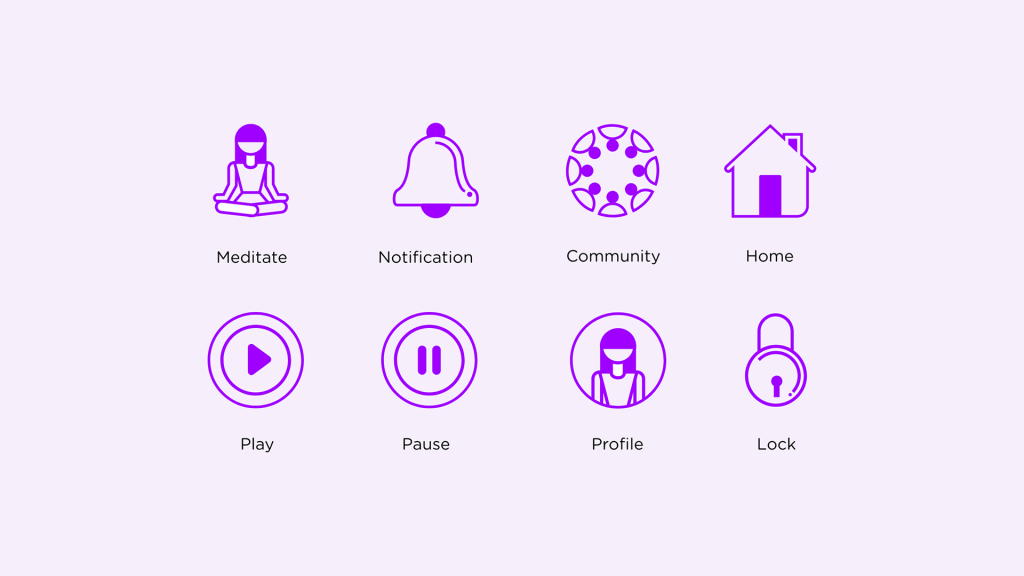
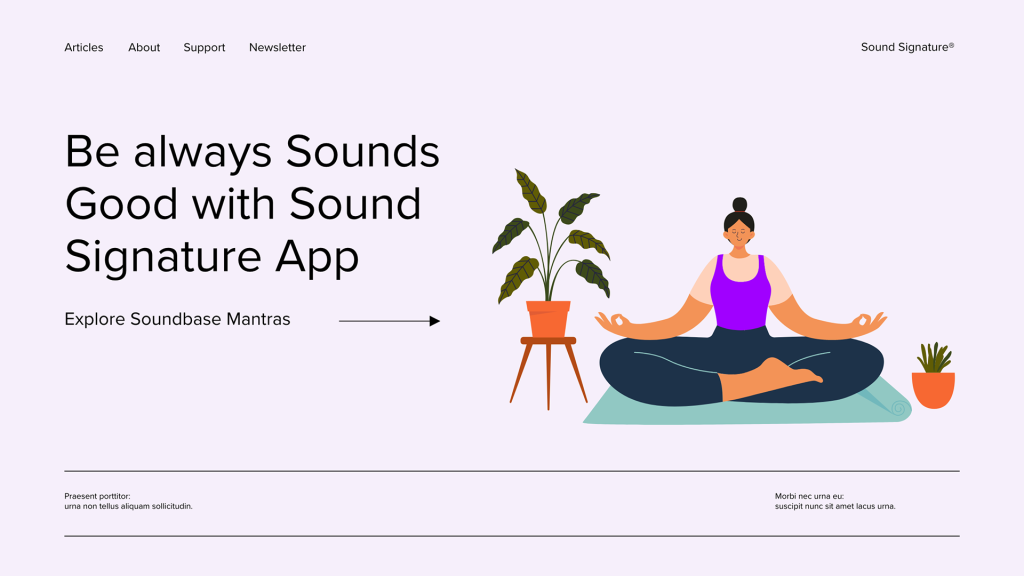
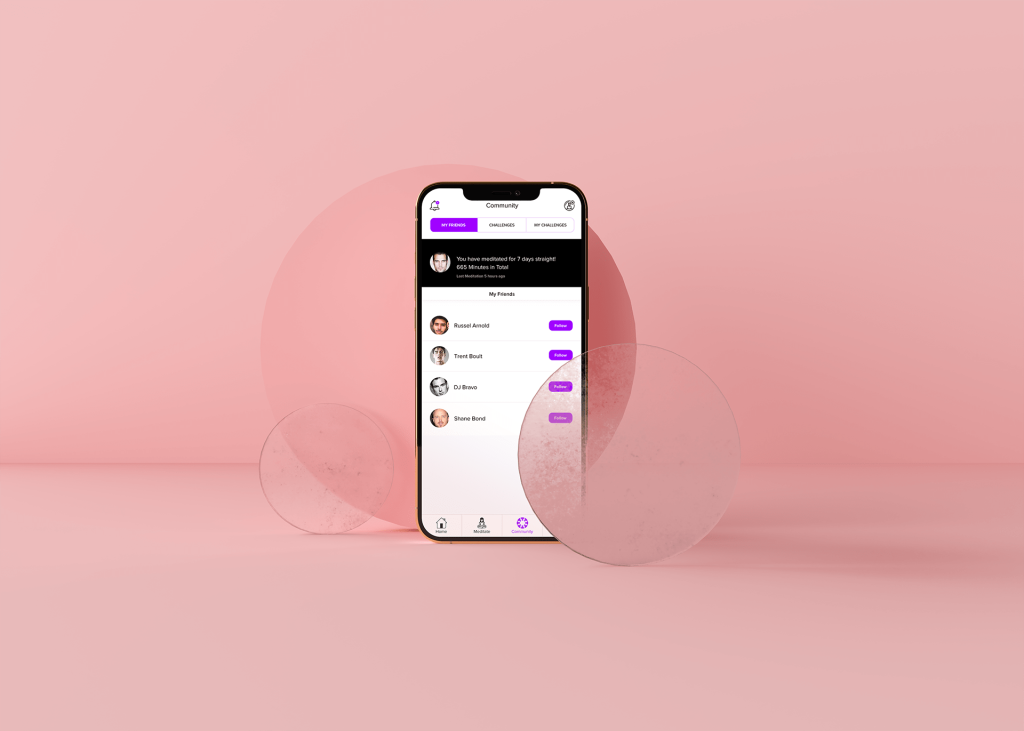

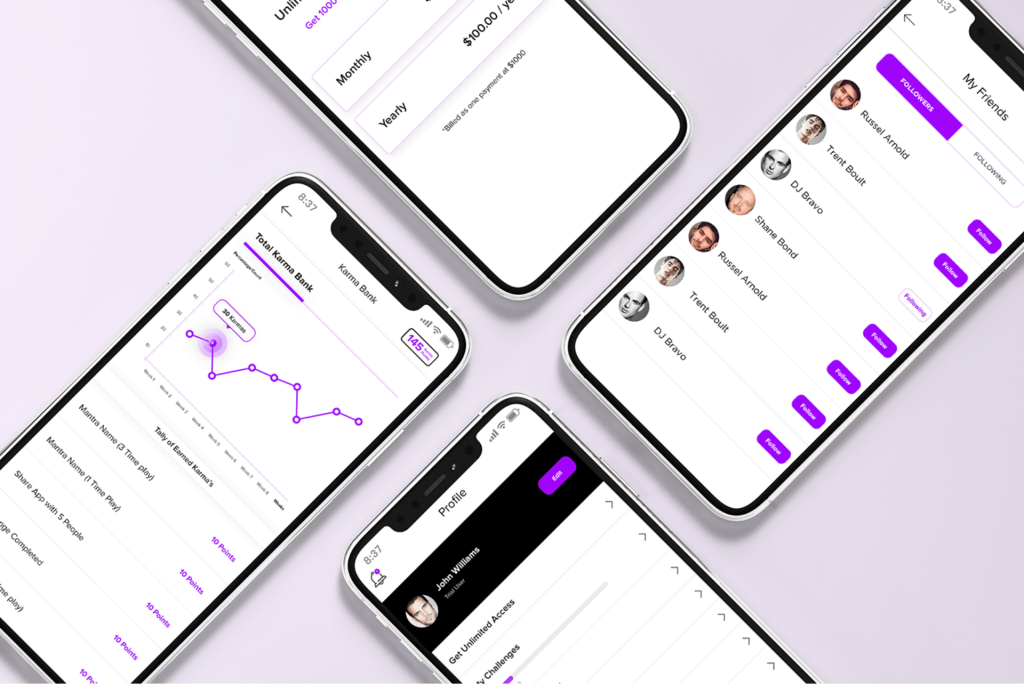
👋 Hello
Have a Project in Mind?
Are you building the same app for the wellness industry? Let’s schedule a call and create awesomeness together.
No consultation fees! If you are satisfied with my pitch, then hire me.